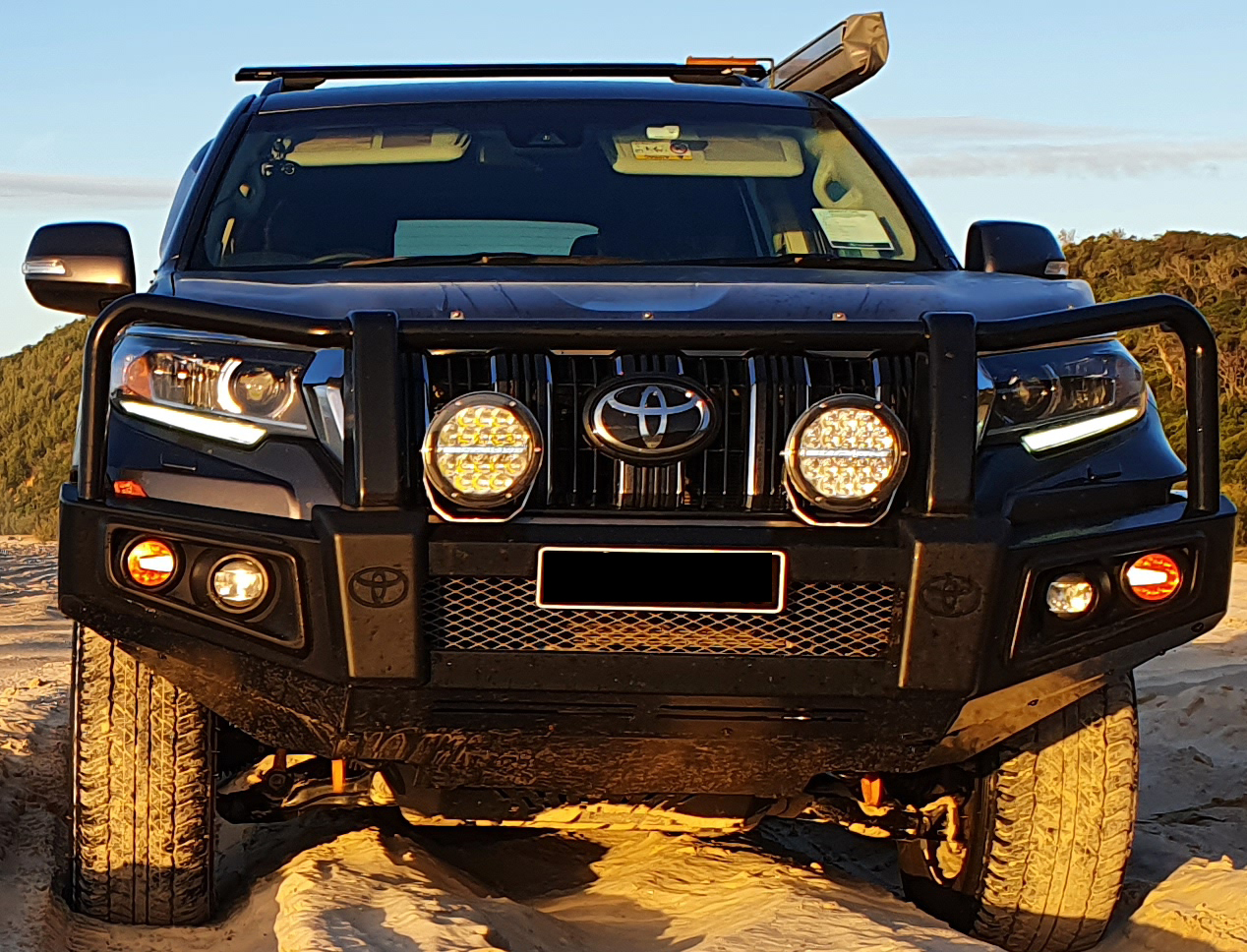The world of four wheel drive lighting has been completely revolutionised in the last decade with the introduction of new technologies and approaches to lighting.
Possibly the biggest change has been the adoption of LED technology however traditional technologies such as Halogen and HID have also improved significantly and still have a place in the decision process.
So what are the parameters that need to be considered when choosing your lighting solution? Here are a few things to consider.
Brightness and reach
This is the most obvious requirement and the most advertised feature. Usually quoted as a number of "lux" of brightness at a certain distance, eg 1 Lux at 700 metres. It tells you how much light you can get onto the road at that distance, so generally the more the better. The total number of "Lumens" is also often quoted. This will indicate a total light output but not describe the focus or spread.
Spread
Distance isn't everything either as having a pinpoint of light in the distance but patchy illumination to the sides will not be overly useful. Some lights have a combination of spot and spread components in every individual light unit while others have different units in a combination pair to cover both requirements. Either way you need to pay careful attention to how the manufacture has described the light pattern you will get. The best lights have a very even effect across your whole field of vision which improves safety and visual comfort. Another thing to note here is that LED light bars are generally very good at producing a useful spread, so they are often used in combination with more specialised distance spotlights to get the best of both worlds.
Current draw and wiring harness
Another important consideration to your driving light configuration is how much power you are going to need to run them. Generally the brighter they are, the more current they will draw from your alternator. This current also needs to run through the wiring harness. There is some risk that a low quality harness may not handle the current, will overheat, melt, short out, and possibly damage other systems, or at worst cause a fire. Many driving light manufacturers sell compatible wiring harnesses for their lights so its generally not too difficult to get right, just an extra expense and descicion you have to make. While on this topic, it is also important to note that installing wiring harnesses has become a little more difficult in modern vehicles. In the "olden days" you could splice into your high-beam supply wire to provide the signal to the relay that switches on the spotlights. With newer vehicle electrical and lighting systems however this doesn't work and you often need to get this power signal by connecting to the correct wire under the dash inside the vehicle. You need to be clear on this part of the installation before you choose your wiring harness and wiring paths as it can be quite difficult. Also, if your new lights have Daytime Running Light (DRL) feature, that is they have a small set of lights in them that are always on, you will also need to ensure your harness and wiring connections allow for this.
Colour temperature
Every kind of light emits a different combination of light frequencies that result in a tinge in the colour of the output. Colour is measured in Kelvin and most lights fall in the range of 3000K to 6000K. Early LED lights were quite blue and some complained that this gave eye strain. Halogens are more at the yellow end. Many people swear by HID technology for it's more white output. Modern LEDs are now achieving some very good colour parameters at least in the more expensive versions. In any case this is something else to be aware of that affects the price and performance of your 4x4 spotlights.
Mounting
Some 4wd spotlights have excellent specifications on paper, great price, reach, brightness etc, however it is important to realise that most of the time they just sit there and hang on. This means they are only as good as their mounting mechanism and this is certainly something that separates the cheapies from the real deal. Constant vibration will cause 4wd lights to both sag and rotate, so have a good look at what will prevent this. You can only do up a bolt so tight, so just tightness may not be enough. Another point to note here is whether they include any kind of anti-theft feature such as keyed nuts.
Water and Dust resistance
Most serious spotlights will state an Ingress Protection or IP rating that describes how resistant they will be to taking in water and dust. The first digit indicates the dust protection, 6 is the best, and the second digit indicates the water protection, 7 can be immersed a little while 8 is pretty much water proof. So IP67 and IP68 are the best.
Radio Interference
If you are using a UHF radio you may find that cheaper LED spotlights generate annoying radio interference. Many 4wd driving light manufacturers will state if they have Radio Frequency noise suppression characteristics.
